I was on vacation with my family in southern Spain and combined that with a visit to Cosentino’s headquarters and industrial park outside of Cantoria, Spain. Thank you to Gemma and the whole team for the amazing hospitality and tour.
A history of stone production
One thing that becomes apparent on the drive through Almeria province is that this area of Spain is deeply rooted in the stone industry.
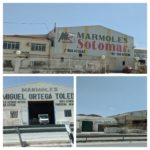
Things radically changed when they began manufacturing Silestone in 1990. Since then, they’ve been riding the rocket ship of success with that product, along with Dekton, which they introduced in 2012.
Unless you’ve been living under a rock, you’ll have seen Cosentino’s products everywhere. Much of that is driven by their own marketing, but they’ve also piggybacked on the success of big-box retailers as a distribution channel.
Superlatives everywhere
On my tour of the Silestone and Dekton manufacturing plants, it was impossible to describe what was going on without awe. In fact, it was hard for me to take meaningful pictures of the site because it doesn’t capture the scale of the campus or the individual production areas. Here’s an aerial photo to give you a sense of the size…
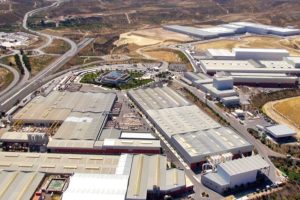
Just arriving at the facility, you’re struck by the volume of the raw materials. Trucks are constantly arriving and departing with minerals. There are multiple quality checks before the ingredients are unloaded into the production areas.
We visited part of a Silestone production line, where quartz is turned into countertop material. Giant bags of quartz are moved to hoppers before they go to the production line. It’s hard to imagine that those crystals are what makes up most of the finished material.
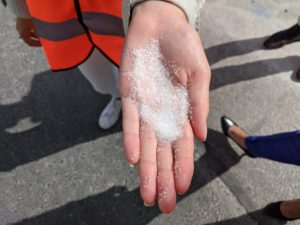
However, the Dekton factory is a whole different scale of operation. I tried to take a picture of the outside of the building but could only really fit about half into the frame of my phone’s camera.
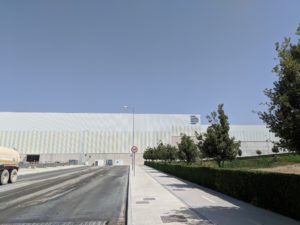
What you notice in this production line is how few humans there are – I think I only saw 10 people as we walked around the building, but it’s tough to be sure how many were actually in there because it’s so big.
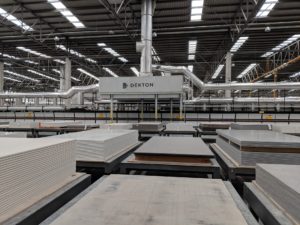
There’s a ton of automation, which is really impressive. Basically, the material goes from raw goop to finished high-pressure porcelain on a single conveyor belt and is only touched by robots after that.
Some of the facts I learned on my tour
Cosentino employs about 4000 people worldwide, with about a third of those in the headquarters. The company’s revenue in 2017 was €901 million.
There are 11 Silestone production lines spread across three buildings, where they turn the raw ingredients of quartz, other aggregates, dyes and resin into surfaces. The Dekton production line, if you laid it out end-to-end would be about a kilometer long.
And all-in-all, their headquarters facility is about 1 million sq meters.
Building brands and a company
Cosentino is growing at an amazing pace, and the employees I talked to give credit to the family who owns and runs the company. They’ve learned how to balance growth, technology, and the human element.
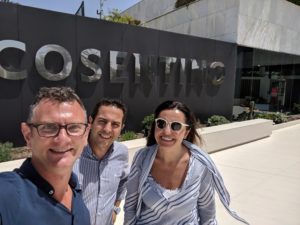
I really felt inspired after visiting. As a business owner, I want to make sure our own company continues to grow and thrive in the same way. I think it boils down to having a vision for the future, hiring great people, and making sure that we’re all working in the same direction.
If you’re a countertop fabricator, or just interested in how these materials are made, I’d strongly recommend a visit. Thanks again, Cosentino!
Want to read more articles like this? Sign up for our monthly newsletter here:



